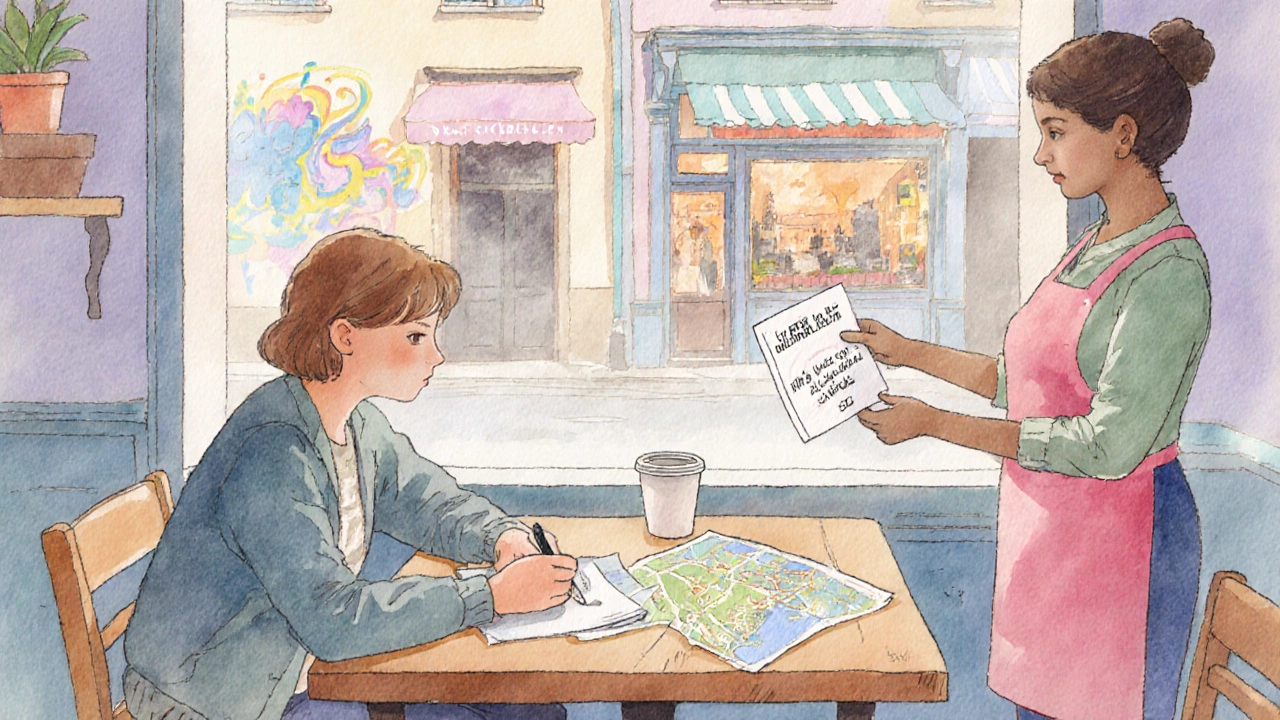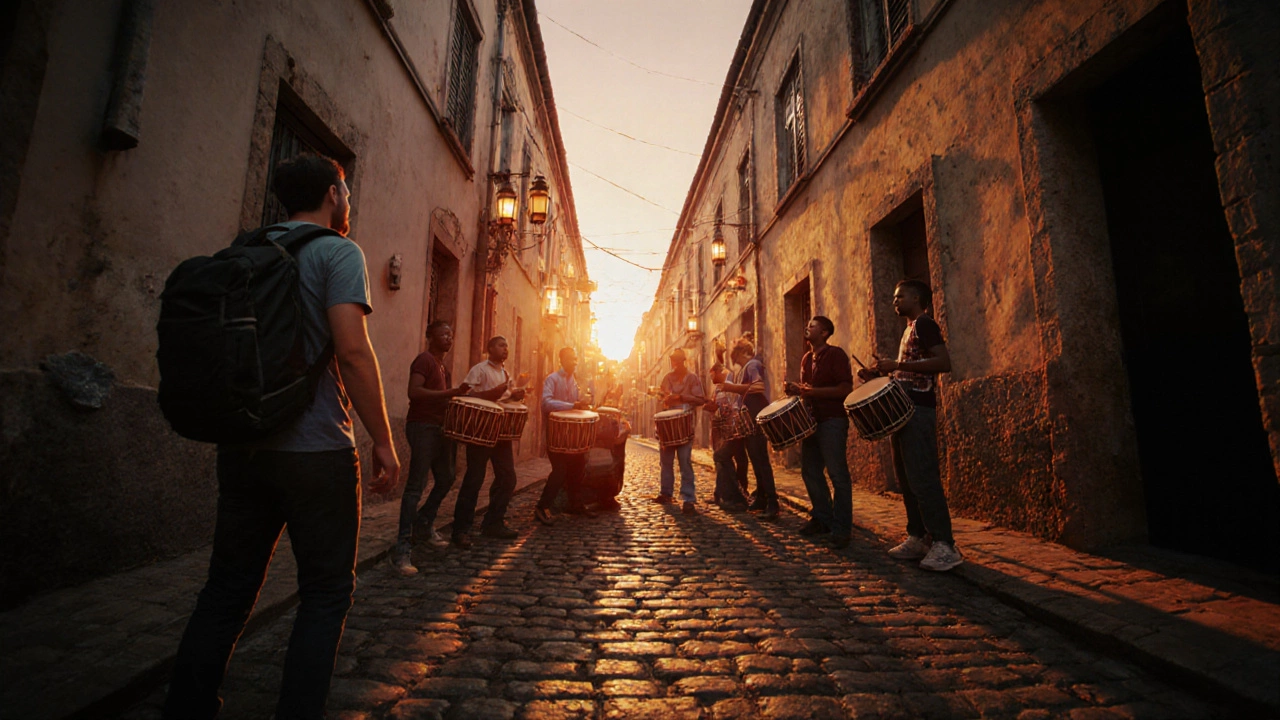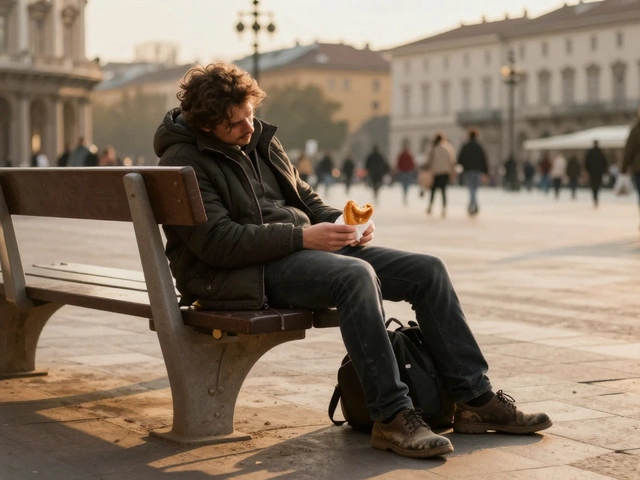Serendipitous Traveler Quiz
How Serendipitous Are You?
Discover your natural inclination toward spontaneous cultural exploration. Answer these questions to find out how ready you are for serendipitous travel!
1. When planning a trip, you usually:
2. You prefer to:
3. When you encounter unexpected situations:
4. When visiting a new city, you typically:
5. Your approach to budgeting for travel is:
6. When interacting with locals:
Your Serendipitous Travel Score
Serendipitous cultural tourist is a traveler who blends curiosity with chance, seeking authentic cultural moments that aren’t on any itinerary. Instead of ticking boxes, they let the unexpected guide their journey, turning a simple stroll into a deep dive into local life.
What the term really means
In plain English, a serendipitous cultural tourist craves encounters that happen by happy accident. Imagine wandering through a narrow alley in Port Elizabeth and stumbling upon a street drumming circle that isn’t advertised anywhere. That moment becomes the highlight of the trip, not a planned museum visit.
The concept sits at the intersection of Cultural tourism is travel focused on experiencing the arts, heritage, and everyday life of a place and Spontaneous travel is the practice of making travel decisions on the fly, often without a fixed schedule. When these two ideas fuse, you get a traveler who values the Immersive experiences are activities that fully engage the senses and emotions, allowing a deeper connection with the destination over a pre‑planned checklist.
Core traits of a serendipitous cultural tourist
- Curiosity first: They ask “What’s happening here?” instead of “What should I see?”
- Flexibility: Their itinerary is a loose framework, not a rigid schedule.
- Local focus: They prefer Local heritage sites are historic or culturally significant places that are often overlooked by mainstream tourism and community events over famous landmarks.
- Respectful engagement: They listen more than they speak, making space for the community’s story.
- Open‑ended budgeting: Money is allocated for unexpected experiences, like a last‑minute cooking class.
How to cultivate a serendipitous mindset
- Start with a loose goal, not a list. Instead of “Visit three museums,” set an intention like “Learn about the city’s music scene.”
- Use local resources. Grab a city map from a cafe, follow local social media hashtags, or chat with shop owners about events happening that day.
- Walk, don’t drive. On foot you notice street art, spontaneous performances, and the rhythm of daily life.
- Embrace language basics. Knowing a few greetings opens doors to conversations that wouldn’t happen otherwise.
- Keep a “yes” notebook. Jot down every invitation or suggestion you receive and revisit it later - often the best experiences start as a simple “maybe.”

Balancing structure and spontaneity
While serendipity thrives on freedom, a completely unplanned trip can become stressful. The sweet spot is a hybrid approach:
| Aspect | Serendipitous | Planned |
|---|---|---|
| Itinerary | Loose framework; room for detours | Day‑by‑day schedule |
| Accommodation choice | Local guesthouse or homestay | Chain hotel |
| Activity booking | On‑site, often last‑minute | Pre‑booked tours |
| Interaction style | Conversational, community‑focused | Guide‑led, scripted |
| Budget flexibility | Allocated for surprises | Fixed expenses |
Think of the plan as a safety net, not a cage. If you find yourself with extra time, let curiosity steer you.
Real‑world examples
Port Elizabeth, South Africa - A traveler wandered into a local jazz jam at the beachfront, invited by a street vendor. The impromptu session lasted three hours and gave insight into the city’s musical heritage that no guidebook mentioned.
Marrakech, Morocco - Instead of the famous souks, a visitor followed a scent of fresh mint to a family‑run tea house hidden in a courtyard. The host shared stories about the city's colonial past, turning a simple tea break into a cultural lesson.
Kyoto, Japan - One morning a cyclist took a side road and discovered a small temple where monks performed a tea ceremony for the public. The experience offered a glimpse into Japanese spirituality that many tourists miss.

Benefits for travelers and host communities
When you travel serendipitously, you often support Community‑based tourism is tourism that is owned and managed by local people, ensuring that benefits stay within the community. Small inns, family‑run workshops, and local guides receive direct income, while you gain authentic stories that stay with you long after the trip ends.
Host communities also enjoy cultural exchange. Visitors who ask questions and show genuine interest help preserve traditions that might otherwise fade.
Checklist: Are you ready to be a serendipitous cultural tourist?
- Do you feel comfortable saying “yes” to unexpected invitations?
- Can you navigate a city with a paper map or offline app?
- Are you willing to spend a portion of your budget on spontaneous activities?
- Do you have a basic grasp of the local language or at least key phrases?
- Are you open to staying in non‑standard accommodations like homestays or guesthouses?
If you answered “yes” to most, you’re primed for a journey where the destination becomes a series of happy accidents rather than a checklist.
What exactly does “serendipitous” mean in travel?
It refers to finding valuable or pleasant experiences by chance, usually when you’re open to exploring beyond a fixed plan.
How is a serendipitous cultural tourist different from a regular tourist?
A regular tourist often follows a pre‑arranged itinerary focused on landmarks. A serendipitous cultural tourist seeks spontaneous, people‑centered moments that reveal a place’s everyday life.
Can I practice serendipitous travel on a short trip?
Absolutely. Even a weekend stay can include wandering into a local market, joining a community event, or chatting with a resident over coffee.
What safety precautions should I take?
Keep a copy of important documents, share your itinerary (even if loose) with someone back home, and trust your instincts. Local news apps can alert you to any sudden changes.
Does serendipitous tourism help local economies?
Yes. Spending on small cafés, community‑run tours, and local arts directly supports residents, often more than large‑scale tour operators.






